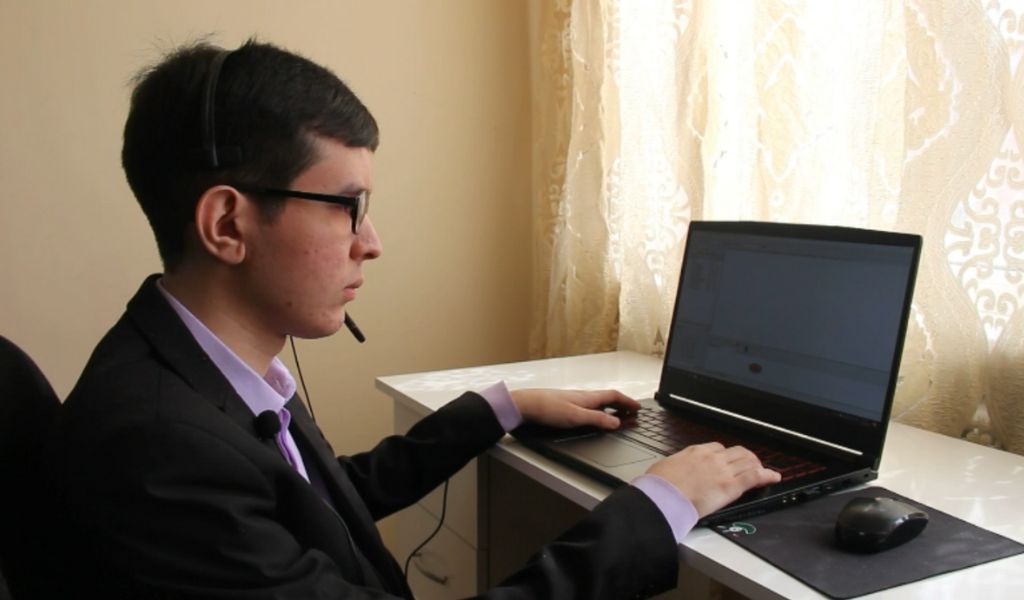Every third Thursday in May, the world marks Global Accessibility Awareness Day (GAAD) — a moment to reflect on whether digital spaces are truly open to everyone. As Uzbekistan moves forward with its “Digital Uzbekistan – 2030” strategy, the promise of innovation risks excluding many unless digital accessibility becomes a non-negotiable standard.
What does “digital accessibility” mean?
When we talk about “accessibility” in public discourse, physical infrastructure like ramps and elevators often comes to mind. But the digital realm — websites, mobile apps, e-services — also needs to be inclusive.
Digital accessibility ensures that people with a wide range of abilities and needs can perceive, understand, navigate, and interact with digital tools. This includes those who are blind or have low vision, are deaf or hard of hearing, have mobility impairments, cognitive disabilities, are elderly, or face temporary barriers such as injuries.
In Uzbekistan, over one million people — 2.7% of the population — are registered with disabilities, and nearly 10% of citizens are aged over 60. The actual number of people with disabilities in the country might be higher as World Bank research shows that 13.5% of the population aged three and above reporting having some form of disability. If digital services are built without their needs in mind, entire populations are locked out of education, employment, healthcare, and public participation.

The reality of digital barriers
Globally, 96.3% of the top million websites still contain critical accessibility errors, according to WebAIM’s 2025 report on the accessibility of the top 1,000,000 home pages. These include:
- Low contrast between text and background
- Missing alt-text for images
- Buttons or links with no descriptive labels
- Inability to navigate using a keyboard alone
For example, a blind user might rely on a screen reader like JAWS, NVDA, or VoiceOver. These programmes convert text and web elements into speech. If a site uses non-standard code — say, a clickable image with no alt-text or a button coded as a <div> — the screen reader may not recognize it at all, rendering core features invisible.
People with motor disabilities also face challenges when websites don’t support full keyboard navigation. A simple task like submitting a form or printing a document becomes a frustrating — or impossible — experience. These are not mere design quirks. They are violations of a fundamental right: equal access to information and services.
Uzbekistan’s first steps: Promising examples
One hopeful case is the Unified Portal of Interactive Government Services — my.gov.uz. In 2023, the platform hired Abdulaziz Salimov, a digital accessibility expert, to lead an audit and improvement plan. Since then, the portal has considerably improved its digital accessibility by following WCAG (Web Content Accessibility Guidelines).
The portal has already optimized its layout for screen readers, enabled full keyboard navigation and made its AI assistant, Muxlisa, more accessible among other works carried out by Abdulaziz. This demonstrates that when inclusion is intentional, real change is possible. Hiring a person with a disability not only empowered an underrepresented voice — it also enriched the platform’s quality and usability for all.
Abdulaziz has a visual impairment and is also a member at local disabled people’s organization NGO Sharoit Plus which promotes a barrier free and accessible society for all. In June 2023, together with another blind people’s rights activist Mirali G’iyosov they created an Uzbek voice for the RHVoice speech synthesizer, which runs on Windows, Linux, and Android operating systems in collaboration the Tashkent City Centre for Blind Youth and Louder pages.
Abdulaziz and Mirali are also working on the first online library of audiobooks for people with disabilities Kitob Plus (“Book Plus” in English). This online platform provides full digital accessibility for blind and visually impaired readers and is fully adapted to their needs. It has mobile apps for iOS and Android platforms which are also fully accessible.
The gaps that remain
Despite these steps, Uzbekistan lacks a comprehensive national standard for digital accessibility. Some governmental websites provide features like text enlargement or high-contrast modes, but these are surface-level solutions. True digital accessibility requires systemic change:
- Clear legal standards that align with WCAG
- Monitoring and enforcement mechanisms
- Training for developers, designers, and policymakers
- Involving people with disabilities and their representative organisations in every stage of design, development and implementation
In 2021, Uzbekistan ratified the UN Convention on the Rights of Persons with Disabilities (CRPD). Article 9 mandates access to information and communication technologies (ICTs), while Article 21 calls for content in alternative formats — such as captions, voice-over, and simplified text. But ratification must lead to domestic implementation.
Why digital accessibility benefits everyone
Accessibility is often viewed as a niche issue. In reality, universal design helps all users:
- Elderly users can navigate intuitive, uncluttered websites more easily
- People in rural areas or with low-bandwidth connections benefit from streamlined, lightweight designs
- Users with temporary limitations (e.g., broken limbs, eye strain) gain usability boosts
Think of a building ramp. It helps wheelchair users, but also parents with strollers, travelers with suitcases, and delivery workers. Accessibility isn’t a luxury — it’s practical, inclusive design.
Economic costs of digital inaccessibility
Ignoring digital accessibility also makes poor business sense. A UK study found that over 70% of people with disabilities abandon websites that are hard to use, costing the e-commerce sector £17.1 billion in 2022 alone.
Globally, businesses forgo billions in revenue every year by not catering to this overlooked demographic. By investing in inclusive design, companies expand their customer base and build trust.
Looking ahead: What needs to change?
As we celebrate GAAD 2025, the call to action is clear:
- Develop national digital accessibility standards in Uzbekistan and elswere based on WCAG
- Embed accessibility from the start — not as an afterthought
- Include people with disabilities in tech teams, policymaking, and usability testing
- Train all stakeholders — from government agencies to software developers — in the basics of accessible design
Accessibility is not about charity or compliance. It’s about justice, innovation, and dignity.
As we build the digital Uzbekistan of tomorrow, let’s ask a simple question: Can everyone use what we create? If the answer is no, we still have work to do — and there’s no better time to start than today.

